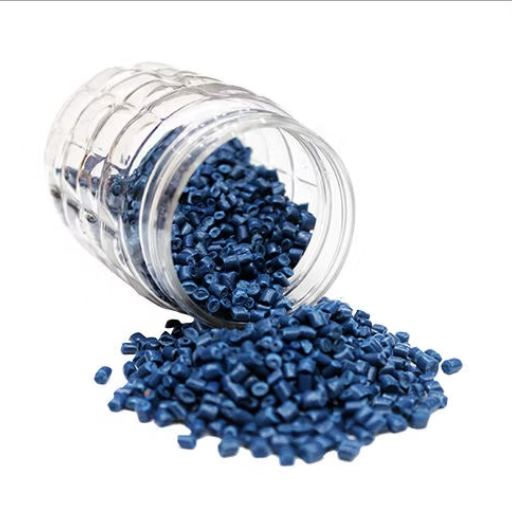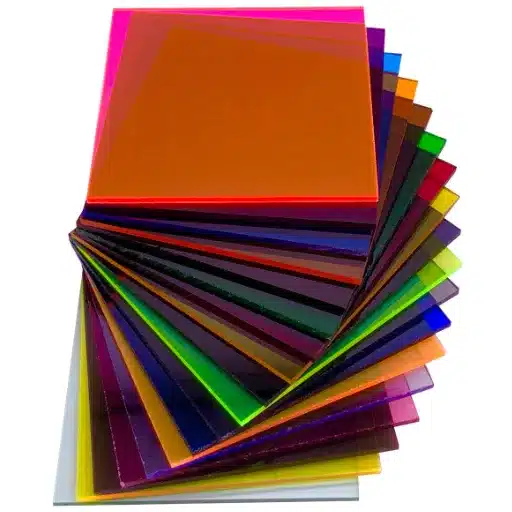The advanced polymers, such as Polyphenylene Sulfide (PPS) and Polyetherimide (PEI), possess qualities and versatility that transform industries. These materials are engineered to sustain extreme conditions and have excellent mechanical strength and chemical resistance for aerospace and medical devices. This guide will highlight PPS and PEI’s distinctive properties, benefits, and applications to help you appreciate their role in present-day innovations. Whether you are a product designer, engineer, or just curious about state-of-the-art materials, this article will answer a few questions about why these polymers are different and how you can use them in your projects.
What is PPS?

Understanding PPS as a Polymer
Chemical and temperature resistance are afforded to the PPS, the very instance of engineering polymer application. Arising from the chemical configuration of polyphenylene sulfide (PPS ), which consists of aromatic rings linked using sulfide bridges, it is semi-crystalline. That structure lends to its high strength and durability even in harsh conditions. It is characterized by low moisture absorption and excellent dimensional stability, which is why it is used in environments where corrosive chemicals, high temperatures, and mechanical stresses are involved.
Due to its performance qualities at temperatures surpassing 200°C (392°F) and impregnation of flame retardant characteristics, the PPS finds application across the automotive, aerospace, and electronics industries. In automotive uses, the polymer is employed for under-the-hood parts like pump housings, electrical connectors, and fuel system components subjected to rigorous operating conditions. The polymer, in combination with advanced manufacturing techniques such as injection molding and extrusion, allows for the versatility to produce complex and precise components.
Some new research on PPS development and reinforcement that involves glass or carbon fiber, for instance, has greatly improved its mechanical properties. Therefore, this polymer often replaces metal in many technically demanding sectors. The polymer is a motivator in materials technology, as performance, reliability, and flexibility are all present in PPS.
Chemical Resistance and Other Key Properties of PPS
Polyphenylene sulfide (PPS) is an excellent chemical industry material with superior chemical resistance. It finds applications in environments subjected to harsh chemicals, solvents, and extreme pH tests. Highly resistant to acids, alkalis, and organic solvents, it guarantees that operational standards regarding long-term durability and reliability are met even in harsh and testing conditions. Additionally, PPS boasts the noblest thermal stability: it holds almost no thermal expansion at high operating temperatures, usually beyond 200°C. This characteristic resistance to heat is a requirement in the automotive and electronics industries, where materials must stand up to extreme temperatures.
Another advantage of PPS is its low moisture absorption, which infuses greater dimensional stability under any humid environment that might cause swelling or warping. Its excellent electrical insulation ability is well-suited for electronic components that must withstand critical performance stops. The material’s flame-retardant characteristics add versatility to applications that need fire resistance as a priority. These combined characteristics make PPS an ideal material for industries that value performance, reliability, and durability in challenging application environments.
Applications of PPS in the Industry
Polyphenylene Sulfide (PPS) has become a must-have material in various industries owing to its peculiar combination of mechanical properties, thermal properties, and chemical resistance. It finds car filter applications where PPS is manufactured into parts such as those for fuel systems, sensors, and pump housing. A counterbalance is that PPS performs with grace for an extended period, withstanding a high temperature and strong threats from chemical acting agents like fuels and lubricants. This working strength is usually challenging in engine compartments, where performance endurance is tested. In a lighter sense, the weight of the material also helps reduce the car’s overall weight, thus increasing fuel efficiency.
PPS is used for connectors, switch housings, and other high-performance electronic components. Its superb electrical insulation and resistance to flame make the material worthy of being used in high-safety-demanding and compact electrical circuits. Moreover, the material is moisture-resistant and does not develop electrical creepage with time, making it more dependable in conditions where moisture is present or in high-humidity situations.
PPS is also used in industrial applications for filter bags, coatings, and seals. These industries rely on PPS because of its resistance to corrosive chemicals and high temperatures. Bag filters in power plants and factories use PPS because it can withstand continuous exposure to acid or alkaline gases at temperatures above 200°C (392°F).
In aerospace, PPS is welcomed as a light yet tough material with thermal resistance. Its use enhances safety and performance in structural components and cable insulation while fulfilling demanding regulatory requirements. The distance PPS can take in extreme conditions makes it an ideal candidate for next-generation aircraft and spacecraft.
Now becoming an invincible force in a market where the demand for materials conforming to the strictest safety, environmental, and performance standards is ever-increasing, PPS firmly asserts that it never ceases to carve a broader range.
Exploring PEI: A Comprehensive Insight
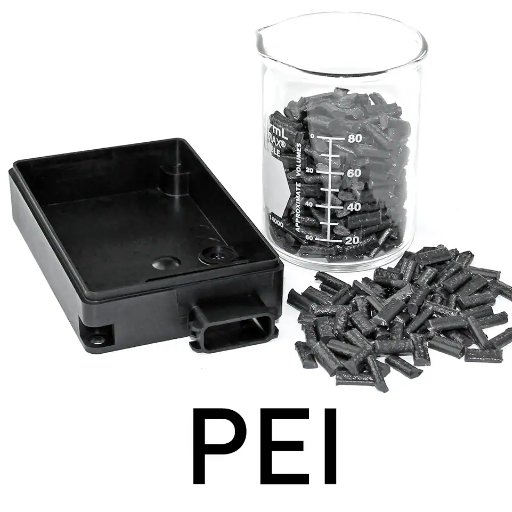
What Makes PEI a Standout Thermoplastic?
Being a premium thermoplastic, PEI presents an unusual combination of mechanical strength, thermal stability, and chemical resistance. Among the polymer’s key characteristics is its extreme heat tolerance, whose heat deflection temperature largely exceeds 200°C, capable of facing rigorous uses. Also excellent in flame retardancy, it safely conforms to a stringent UL94 V-0 rating for flammability. Having this resistance against electrical requirements also allows PEI to be put into electrical and electronic applications.
Another notable feature is the strength offered: PEI, with a high strength-to-weight ratio, ensures structural integration with negligible weight. This property is important in sectors like aerospace, automotive, and healthcare, where lightweight yet durable materials are necessary. Furthermore, it has good resistance to hydrolysis, which means it performs well under humid or aqueous environments for quite some time.
Its manufacturability allows various processing methods, such as injection molding, extrusion, or thermoforming. All of that makes PEI the prime candidate choice in application sectors that need highly performing treatments and guaranteed outcomes.
Thermal Stability and Electrical Properties of PEI
PEI is known for being a thermal service polymer; therefore, it can undergo extreme temperatures without any thermal degradation. The high Tg of nearly 215°C of PEI guarantees that it can be subjected to high temperatures up to the melting range of 170°C. This high working temperature allowance is being extensively exploited in automotive parts such as under-the-hood, aerospace, and industrial machinery, where heat resistance is the main issue.
Besides thermal resistance, PEI materials showcase excellent electrical properties and therefore find their applications in electrical and electronics. The dielectric strength of PEI is such that it usually exceeds 17 kV/mm, meaning that the material can successfully insulate even high voltages. Also, the dimensional stability of PEI against thermal and electrical stresses aids in imparting reliable behavior to components such as semiconductor test sockets and connectors in terms of precision cuts. Its set lower dissipation factor and constant dielectric constant over a wide frequency range are high attributes toward efficient high-frequency electrical signal attenuation, crucial in contemporary electronics.
Essentially, the two sets of properties- the thermal stability and the electrical insulation- provide PEI with the tag of an industry polymer capable of withstanding difficulties and performance demands in all mechanical and electrical applications. This dual purpose fulfills the ever-evolving industrial demands and, therefore, guarantees reliable performance and durability under severe thermal and electrical conditions.
Where is PEI Used in the Aerospace and Automotive Industries?
Offering a combination of thermal resistance, electrical resistance, and lightweight character, PEI finds applications in the aerospace and automotive industries. In aerospace, it is often used for airplane interior component applications, such as seat frames, overhead bins, and panels. These applications take advantage of PEI’s low weight to help reduce fuel consumption, whereas flame resistance safeguards it from relevant safety regulations.
Similarly, PEI is widely used in automotive applications under the hood: electrical connectors, sensor housings, and thermal systems. Its high-temperature performance and resistance to aggressive chemical environments make it an ideal solution for supporting the booming markets for electric and hybrid vehicles. PEI also assists in improving energy efficiency and durability while meeting the industry’s stringent testing requirements.
PPS vs PEI: Comparing Two High-Performance Polymers
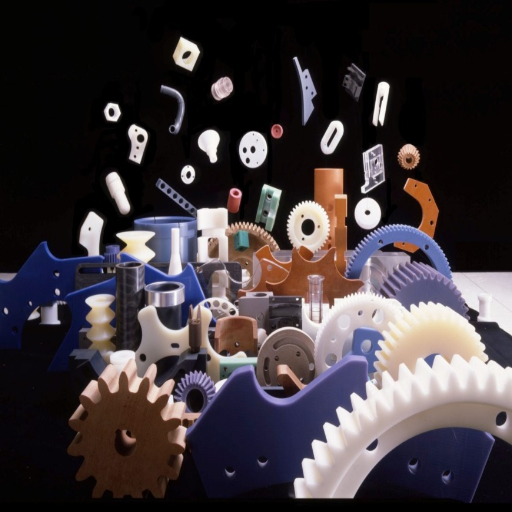
Differences in Mechanical Properties
Comparing PPS (Polyphenylene Sulfide) and PEI (Polyetherimide), we find that mechanical properties largely influence an object’s suitability for use in varying industries. PPS offers supreme dimensional stability and tensile strength, perfect for parts under mechanical stress or requiring precision for long periods. It usually has a tensile strength range of about 70-85 MPa and equally tremendous resistance to creep even under high temperatures.
Contrarily, PEI maintains a renowned toughness and impact resistance. With a tensile strength generally approximating 90-100 MPa, PEI offers more elasticity since it can undergo greater strain levels before deforming than PPS. This high elasticity is essential for dynamic processes that withstand repeated mechanical shocks or vibrations. Apart from this, PEI is endowed with great toughness that guarantees steady mechanical performance even under strenuous conditions, when further mixed with an excellent flexural strength.
Both polymers also differ in their thermo-mechanical behavior. PPS often stays rigid, retaining its mechanical integrity at high temperatures, typically up to nearly 220°C. Comparatively, PEI maintains reliable mechanical performance at even higher temperatures of about 230-240°C, sitting at a Tg higher than 215°C. This makes PEI well-suited for critical applications that require prolonged exposure to very high temperatures.
Therefore, depending on the specific needs of the application, one may select PPS for situations that require rigidity and chemical resistance, whereas PEI is apt for high-impact, high-temperature environments.
How Do Their Thermal Resistances Compare?
In the measurement of thermal resistance, PPS (Polyphenylene Sulfide) and PEI (Polyetherimide) stand out as exemplary materials but can be seen as catering to two different operational needs. PPS behaves with high thermal stability, withstanding temperatures up to around 200 to 240°C continuously. It is suitable for applications where mechanical properties require maintaining stability for extended periods under very high temperatures. Also, in its configuration, it is self-flame-retardant with low thermal conductivity, which renders it highly efficient in hostile environments.
While it can resist high heat for a very long period, PEI, having a Tg of more than 215°C, is an incredible performer under the most extreme thermal situations and is, therefore, selected when the use requires heat resistance coupled with impact strength and dimensional stability under thermal stress.
Although ideally suited in a high-temperature environment, theoretically, PEI provides better thermal resistance and better structural integrity when subjected to extremes and repetition of heating cycles compared to PPS. However, the choice between the two depends chiefly on what exactly those thermal conditions are in real use and factors such as mechanical strength requirements, environmental exposure, etc.
PEI vs PPS: Which is Better for Injection Molding?
Several parameters determine whether PEI (polyetherimide) or PPS (polyphenylene sulfide) is a better injection molding material. These include temperature tolerance, mechanical strength, chemical resistance, and higher processing temperatures.
Thermally, PEI is held above all others, providing excellent stability and retaining mechanical properties even at high temperatures, typically beyond 200°C. Such a property of PEI makes it an excellent choice for applications where performance under mechanical stress and heat has to be maintained for long periods, such as in the aerospace and automotive industries. Its stiffness and flame-retardancy are advantageous when dealing with components in which safety is paramount.
PPS is best suited for chemical resistance situations and skilled against aggressive chemicals- acids, bases, and solvents, as the case might be. The mineral also confers some Low susceptibility to hydrolysis conditions, thus making it the ideal candidate for chemical processing and industrial machinery. The lower melting temperature compared to PEI eases injection mold processing and lowers cycle time and manufacturing expenses.
But dealing with materials is far from working alone. Usually, the complexity of the application indicates the choice. When extreme thermal and dimensional stability of parts is required in things like electrical sockets or medical equipment, PEI will probably be the choice. If chemical resistance or lower processing temperatures become a more considered alternative, PPS may have a more realistic pathway.
Hence, evaluating part design, performance requirements, tooling concerns, and budget considerations sets the stage for the best injection molding choice between PEI and PPS, with its specific set of advantages based on the industry’s needs.
Understanding the Mechanical Properties of PPS and PEI

Evaluating Tensile and Mechanical Strength
Tensile and mechanical strengths are highly important in establishing end-use applications against PPS (polyphenylene sulfide) and PEI (polyetherimide). PPE is a tough resin, with its tensile strength averaging 85 to 105 MPa, depending on its formulation and reinforcement. This strength and rigidity make it ideal for applications requiring dimensional stability and chemical resistance, such as automotive parts and electronic enclosures.
In contrast, PEI offers far greater strength, often higher than 110 MPa, making it suitable for demanding applications where the materials are consistently stressed mechanically. These advantages are even more pronounced when considering the high thermal stability, establishing PEI as a material of choice in aerospace, medical, and electrical areas that must rely on strong yet lightweight materials.
It is also essential to recall that both PPS and PEI are amenable to enhancements in tensile strength and rigidity through reinforcements like glass or carbon fiber. For example, glass-filled PEI can provide tensile strengths above 170 MPa, whereas the reinforced PPS gains equally in toughness and dimensional stability. It is equally important to remember how each material behaves at a mechanical level and how it can be reinforced to arrive at the best choice in complex engineering designs.
Impact of High-Temperature Conditions on Performance
Thermal conditions significantly affect the mechanical, mold temperature, and chemical behavior of engineering materials, often deciding their field of use. Examples like PEI and PPS are exceptional because they have some of the most stringent heat stability requirements, making them ideal for applications that require high-temperature operations over long periods. For instance, PEI continues to function mechanically at temperatures of over 200°C, while PPS has significant heat resistance yet maintains temperatures of up to around 260°C.
Yet it must be emphasized that increased temperatures tend to make materials undergo thermal expansion, changes in other properties such as thermal or length stability, and loss of tensile strength if materials are not designed or appropriately treated. Incorporation of fillers such as glass fibers is effective in reducing the mentioned effects by improving both thermal conductive and dimensional stability of the material. In addition, understanding the heat deflection temperature (HDT) and glass transition temperature (Tg) of such materials is necessary for predicting how they will behave when subjected to extreme firing conditions, ensuring that they perform as expected and function under demanding engineering applications.
The Role of PPS and PEI in Modern Manufacturing
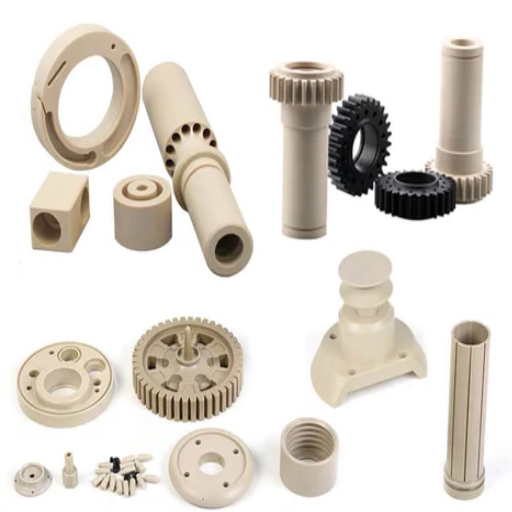
Innovations in Plastic Machine Technology
Such transformations are possible owing to the new achievements in plastic machine production, which is no longer traditional, but now up-to-date. The application of modern plastic machines in the manufacturing sector has introduced a new employment contract, where efficiency, precision, and improved material properties play a big role. In my opinion, the development in engineering approaches of plastic technologies is very noticeable, viz., application of advanced electronic injection and 3D printing, which can be mentioned in particular. In reality, automated machines have made it very easy to achieve good and consistent quality within production systems since there is uniformity in the running of the machines. This situation has once again been worsened by the introduction of automation, robotics, and AI to such systems, as it has improved both their capabilities and efficiency, which increases the likelihood of additional mistakes. Available in the current market is a collection of design tools, thus allowing unopposed illustrations for complex singular designs that can be delivered without any precision weakness, construction difficulties, for example, customization considerations regarding aerospace and healthcare, among others.
There is more comfort and even more improvement in `comfort` in a different way than in other fields. Developing the simulation software, control systems, and a new generation of electro-mechanical molds allows faster and more efficient molding of the new high-performance thermoplastics, such as PPS and PEI. This is because the advanced technology has allowed for full exploitation of the advantages of such polymers, including their high resistance to heat and solvents. Machines for manufacturing pieces with increased quality levels, which are more acceptable in some applications, possess special wearable parts to facilitate real-time inspection of variables such as temperature and pressure, reducing errors and discarding material.
These outstanding achievements are not limited to increasing manufacturing capacity but are also considered part of the measures to meet sustainability goals. One can say that introducing the newest technologies in the area of plastics processing equipment creates more opportunities. It embodies the reduction of material wastage, an increase in energy efficiency, and proper layout of manufacturing operations to respond to the changing market while still taking care of nature.
Importance of Flame Retardancy and Low Smoke in PEI Components
Flame retardancy and low smoke production are essential factors I give the utmost priority to while working with PEI components, especially when safety and performance considerations dominate the building context. Combining these properties imparts fire safety because it inhibits the propagation of a flame while reducing the volume of smoke that may contain harmful particles released during burning. With this particular profile, PEI is welcome in industries where uncompromised fire safety standards are paramount, and public safety is always the priority: aerospace, automotive, and electronics.
Being flame-retardant, PEI will not ignite easily at high temperatures, affording time for evacuation or fire control in case of an emergency. The other equally relevant characteristic is low smoke generation, which reduces toxic fumes and smoke density while being paramount for impaired visibility or respiration within confined spaces. All these features foster compliance with fire safety regulations on a global level and promote safer environments, be it within airplanes, cars, or highly advanced electrical installations.
On the design and manufacturing end, choosing flame-retardant and low-smoke materials like PEI offers designers and manufacturers reliability and longevity in more extreme environments. I have found that they meet all criteria for safety, but also resonate well with the ultimate demands from the end user for products that are engineered with robustness and compliance. When developing solutions for high-stakes applications, I always regard these material properties as indispensable to ensure functionality and safety.
Environmental Impact and Sustainability Considerations
All in all, when dealing with environmental impact and sustainability issues, my first consideration is the selection of materials and process alternatives, which are generally less harmful to the environment while not compromising performance. I thereby go into life cycle analysis of the material, paying particular attention to recyclability, energy consumption during its production, and long-term durability. In that way, the products generated would meet environmental regulations and feed into the circular economy. Sourcing materials that offer lower carbon intensity, another factor, shows excellent potential to attenuate further ecological degradation.
The other aspect of sustainability envisions designing for efficiency. The solutions I designed optimize resource use and foster energy efficiency at the point of end-use application, thus forging avenues for the creation of sustainable products that are equally inexpensive. This includes working with suppliers and teams to develop new manufacturing methods to reduce waste and emissions. In short, by applying high-performance materials combined with green manufacturing practices, I propose solutions that balance the environmental imperatives with the long-term interests of stakeholders.
Reference Sources
- PEI vs. PPS – Material Comparison
- Comparative Analysis: PEI vs. Other High-Temperature Plastics
- Plastic Property Comparison Graph
- Top PEI Plastic Pellets Suppliers in China
Frequently Asked Questions (FAQs)
Q: What is PPS, and how is it different from PEI?
A: Polyphenylene sulfide (PPS) is a high-grade thermoplastic with superb heat and chemical resistance. Polyetherimide (PEI), commonly known by the trade name Ultem, is an amorphous thermoplastic with high strength and rigidity, excellent electrical insulation, and higher thermal stability. The primary difference lies in their inherent properties; PPS provides better chemical resistance while PEI provides higher mechanical strength and good dielectric properties.
Q: How do temperature resistances between PEEK, PPS, and PEI compare?
A: PEEK stands above both PPS and PEI in temperature resistance. This means that during service in extreme temperature environments, PEEK will be a candidate that offers excellent thermal stability. Although both PPS and PEI may technically withstand temperatures reasonably well, most space is in PEEK’s hands for sustained high-temperature applications.
Q: What are the electronics applications of PPS?
A: Due to its excellent electrical insulation and dimensional stability, PPS has extensive applications in the electronics industry. It is used in connectors, sockets, and many other applications requiring high heat resistance and electrical performance.
Q: How does a high PEI glass transition temperature influence its applications?
A: Due to the very high glass transition temperature, PEI sustains its mechanical properties at higher temperatures, thus making it fit for aerospace and electronic applications where the components are required to operate under high thermal stress.
Q: Why is nylon not often considered a high-temperature polymer as opposed to PPS and PEI?
A: Nylon does not feature high temperature and inherent thermal stability, as do PPS and PEI. However, it has good wear resistance and mechanical properties in environments not demanding high thermal stability, which makes it an option rarely preferred for applications involving high temperatures.
Q: How will using PPS benefit applications involving acids and solvents?
A: PPS is highly resistant to acids and solvents, so its use is particularly beneficial in chemical processing industries. It withstands corrosive environments without degradation, making it perfect for pumps, valves, and other components exposed to harsh chemicals.
Q: How does PEI offer an advantage in aircraft cabin components?
A: The PEI offers good flame retardancy, high strength-to-weight ratio, excellent thermal insulation, and electrical insulation properties essential for aircraft cabin interiors. These attributes ensure the safety of the passengers and maintain structural integrity under varying environmental conditions.
Q: What are these material properties and values for PPS and PEI?
A: Generally, PPS melts at around 280°C and excels in chemical resistance and low flammability. PEI, conversely, has a high glass transition temperature, superb tensile strength, and good flame retardancy, which makes it suitable for high-end applications. Depending on the application at hand, both materials have unique benefits.
Q: How does the manufacturing process affect the quality of PPS- and PEI-formed articles?
A: The manufacturing process involving temperature control and molding techniques substantially affects the final properties of PPS and PEI articles. Proper handling ensures an optimal physical state, such as dimensional stability and mechanical strength, which is therefore vital to their actual application in highly demanding environments.
Q: How does higher tensile strength influence choosing PPS and PEI for surgical instruments?
A: High tensile strength is a vital characteristic to consider when selecting materials for surgical instruments to ensure durability and reliability. PEI with excellent tensile strength seems to be the most suitable for applications requiring utmost precision and structural integrity. PPS could also be used, but will primarily be selected for chemical and thermal resistance.

